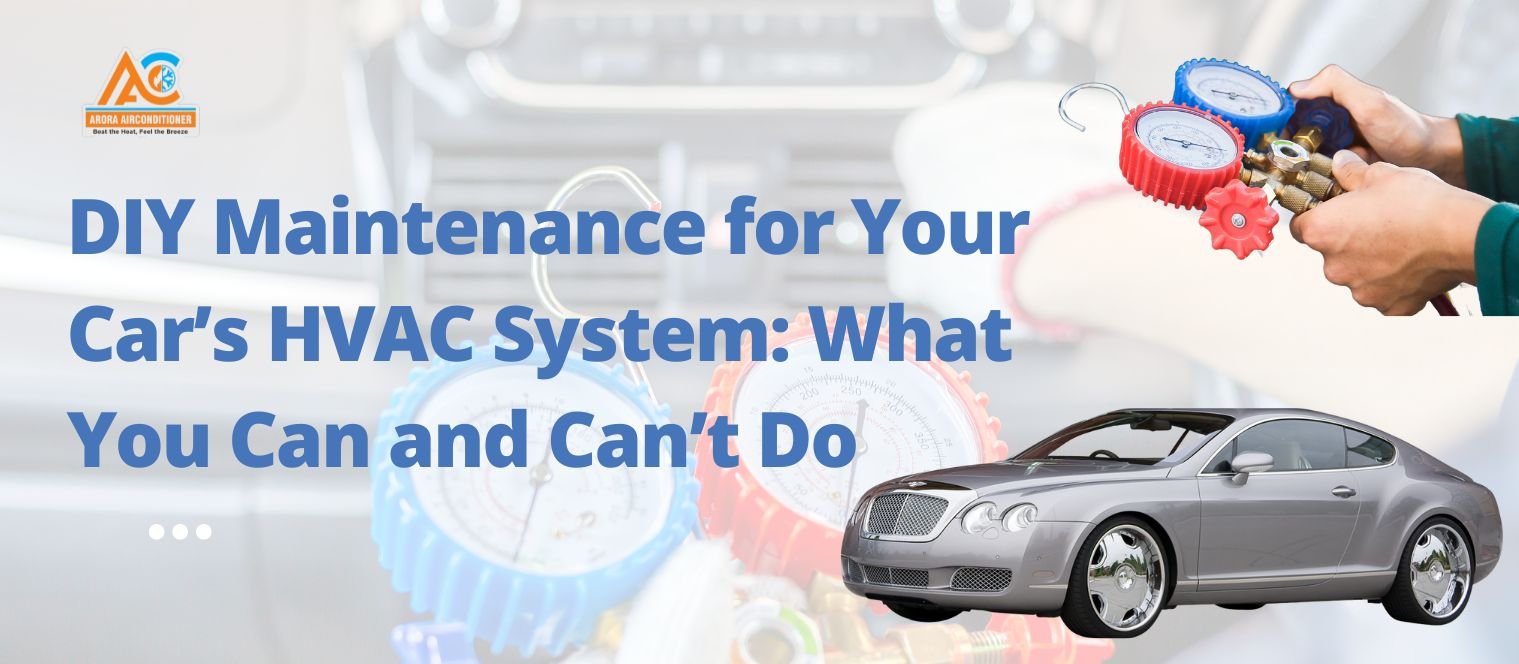The HVAC system in your automobile is essential to keeping you comfortable when the temperature rises or falls. The heating, ventilation, and air conditioning (HVAC) system is your car’s solution to keeping the interior at the ideal temperature, whether it’s a hot summer day or a cold winter morning. However, are you aware of how this system operates? To help you better comprehend the key elements and how they interact, let’s break it down into simpler terms.
What is a Car HVAC System?
Your car’s heating, ventilation, and air conditioning system is known as the HVAC system. It is in charge of regulating the inside temperature of your car so that you may remain comfortable regardless of the outside weather. To put it briefly, it supplies warm air in cold weather and cool air in hot weather. The HVAC system is composed of various parts that cooperate to give you air that is clean, fresh, and at the ideal temperature.
Key Components of a Car HVAC System
Let’s take a closer look at the important parts of your car’s HVAC system and how they function:
1.Compressor
- The essential component of your air conditioning system is the compressor. It transforms refrigerant gas into a high-pressure, high-temperature gas by compressing it. In order to release its heat, this gas will thereafter pass through the remainder of the system.
- Consider it the pump that initiates the air conditioning process.
2.Condenser
- The condenser and a radiator are comparable. By releasing heat, it cools the hot refrigerant gas that comes from the compressor. As a result, the refrigerant cools and becomes liquid.
- The condenser is typically located on the front grill of your car, as you have surely observed. It is the location where the refrigerant releases heat.
3.Evaporator
- The air entering the cabin must be cooled by the evaporator. It absorbs heat from the surrounding air by evaporating the cold liquid refrigerant. The air entering the car gets chilly and revitalizing while this process takes place.
- Consider it the personal refrigerator of the air!
4.Expansion Valve or Orifice Tube
- The refrigerant flow into the evaporator is controlled by the expansion valve. Depending on the required temperature, it regulates the amount of refrigerant that enters the evaporator. It is crucial for preventing the system from overworking or freezing.
5.Blower Motor
- This part moves air about the vehicle’s cabin. The blower motor circulates the cooled air through the vents once the refrigerant has cooled it, making the car more comfortable for all occupants.
- It functions similarly to the fan that makes sure air gets to every part of your vehicle.
6.Refrigerant
- The fluid that transfers heat and produces cooling is called refrigerant. It transfers heat and maintains the proper temperature in your cabin by cycling through the system from gas to liquid and back again.
7.Air Filter
- The air filter is crucial to maintaining the cleanliness of the air inside your vehicle. It ensures that the air you breathe inside your automobile is clean and fresh by filtering out dust, debris, and other particles.
- Regular filter replacement is crucial since a blocked filter can impair airflow.
How Does the Car HVAC System Work?
Now that we understand the functions of each part, let’s examine how they cooperate to keep you comfortable while driving.
- Turning on the AC
- The compressor begins pushing refrigerant through the system when you turn on the air conditioner, which initiates the cooling process.
- Cooling the Refrigerant
- After passing through the condenser, the refrigerant gas cools and releases heat. As the gas approaches the evaporator, it transforms into a liquid.
- Cooling the Cabin
- After arriving at the evaporator, the liquid refrigerant evaporates and absorbs heat from the surrounding air. The blower motor then moves this cooled air around the cabin.
- Continual Circulation
- As long as the air conditioner is running, the cycle will continue. The system’s cool temperature is maintained by the refrigerant’s continuous cycling.
Maintaining Your Car HVAC System
Regular maintenance is key to keeping your car’s HVAC system running smoothly. Here’s what you can do to ensure its longevity:
- Regular Inspections: To ensure that everything is operating as it should, have a professional inspect your system at least once a year.
- Replacing Filters: To guarantee enough ventilation and clean air within the cabin, replace the air filters on a regular basis.
- Checking Refrigerant Levels:Make sure your system is fully charged because low refrigerant levels can impact cooling effectiveness.
- Cleaning the System:Clean the condenser and evaporator coils to avoid dirt and debris accumulation, which can lower efficiency.
When to Seek Professional Help
Even while you can manage some little problems on your own, it’s wise to consult professionals when something goes wrong. Expert HVAC specialists, such as those at Arora Air Conditioner, are able to precisely identify issues and offer prompt, dependable fixes to restore system functionality.
Conclusion
Maintaining a comfortable ride starts with knowing how your car’s HVAC system operates. You can maintain the functionality of your system more proactively if you are aware of its essential parts and how they interact. Arora Air Conditioner is available to assist you with any maintenance or repairs you may require. Make an appointment for your HVAC service with us right now to be cool and comfortable while traveling!
FAQ
- What does HVAC stand for in my car?
Heating, ventilation, and air conditioning are referred to as HVAC. It is the mechanism in your vehicle that regulates the cabin’s temperature and air quality. - Why is my car’s AC blowing warm air?
A malfunctioning compressor, a blocked evaporator, or low refrigerant levels could be the cause of your car’s air conditioner spewing warm air. To identify the problem, it is best to have an expert inspect your system, such as Arora Air Conditioner. - How do I know if my car’s HVAC system needs a repair?
Look out for these signs:
- Instead of cool air blowing, warm air
- Unusual sounds emanating from the system
- Bad smells coming from the vents
- Insufficient or nonexistent airflow For a comprehensive examination, get in touch with Arora Air Conditioner if you observe any of these.
- How often should I replace my car’s air filter?
Although changing your car’s air filter is advised every 12,000 to 15,000 miles, you should consult your owner’s manual for precise instructions. Proper airflow and high-quality air inside your vehicle are guaranteed by a clean air filter.
5. What should I do if my car’s AC isn’t cooling properly?
Low refrigerant or a broken compressor could be the cause of your air conditioner’s improper cooling. Make an appointment with Arora Air Conditioner so that a professional may inspect and fix your system.




